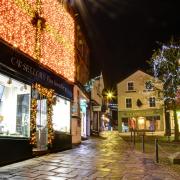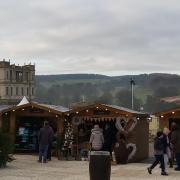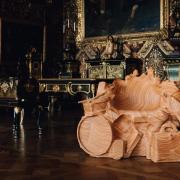Out and about with Roly Smith...
Not long to go now before the Big Day, and many people have already ‘decked their halls with boughs of holly,’ in the words of the popular carol, first published in 1881 and sung to a 16th century Welsh tune.
The bright scarlet berries of the holly (Ilex aquifolium) brighten up many houses, and indeed woodlands, in the depths of winter, so it’s no surprise to find that it has attracted more than its share of folklore and customs.
The link between Christ’s crown of thorns and the blood-red berries of the holly has an obvious Christian resonance, but holly had played an important role in the Old Religion before that.
The custom of bringing evergreen boughs of holly indoors to decorate houses and barns in midwinter is a custom which goes way back to pre-Christian times. The barbed leaves and scarlet berries of holly were seen as a powerful fertility symbol, and a charm against witchcraft and goblins.
It was thought to be a plant of lightning and eternal life, and trees were often planted outside cottages because they were thought to bring good luck and protection from storm, fire and the Evil Eye. They also had medicinal properties. In some parts of Derbyshire, painful winter chilblains were relieved by beating with a holly spray – ‘to let the bad blood out.’
There is a still a widely-respected tradition of not taking down the holly and other Christmas decorations before Twelfth Night. But the date used to be Candlemas in early February – the old Celtic festival of Imbolc – which was celebrated in pre-Christian Europe at about the same time of year.
The number of placenames based on the word holly in the Peak District and Derbyshire indicates the importance which was locally lent to the plant. The Old English for holly was holegn, and places like Hollington, between Ashbourne and Derby, and the numerous farms and houses known as The Hollins or The Hollies, Hollingreave or Holly Grove, all provide examples. Hollin Clough, just above the Derwent Dam and leading up to Derwent Edge, means ‘the rocky valley with holly trees.’
Being such a distinctive and evergreen tree, it was often retained as a boundary marker when hedges were cut. Walkers may notice how often they seem to grow next to stiles, perhaps assisting in their location and indicating the path ahead.
Despite their prickly leaves (incidentally, only the lower leaves, where animals usually graze, are thorny), holly boughs were often cut as fodder for sheep and cattle. Holly leaves have one of the highest calorific contents of any tree browsed by animals, and they are also very rich in nutrients.
Martin Spray, author of an historical survey of the use of holly boughs as a source of cattle food, believes the practice was widespread up until the 18th century. ‘It seems to have been particularly prominent on the grits and sandstone of the Pennine foothills, roughly in the triangle formed by Derby, Leeds and Manchester.’
Spray also recorded a conspicuous concentration in the same area of ‘hollin’ and ‘holly’ place names – and even an abundance of the same words as family surnames in telephone directories.
Our youngest granddaughter was also called Holly – and she was surely the best Christmas present of all.



























